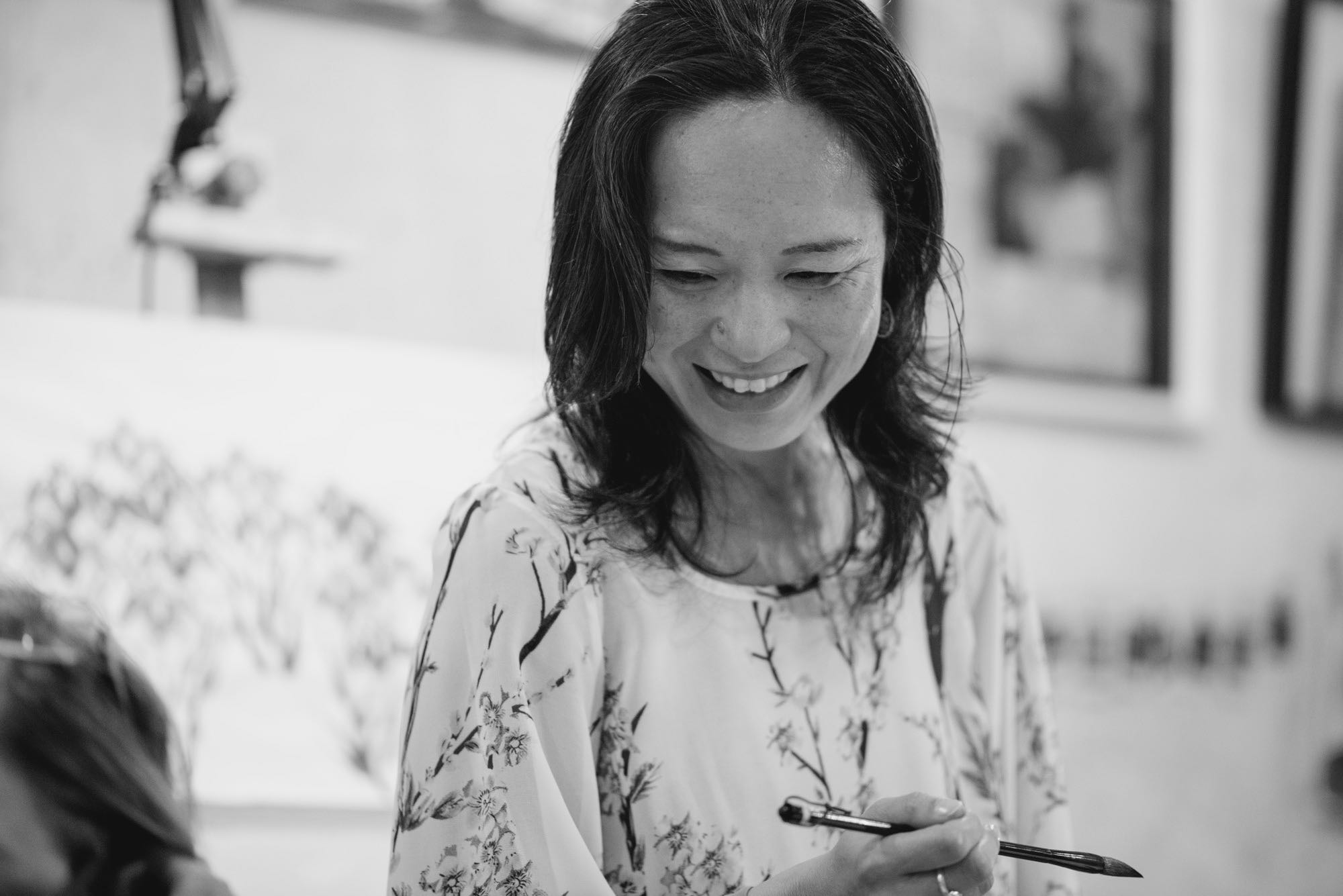During this week, the 3rd year students of Animation have done a class Sumi-e Masterful with Kaoru Hirose. The Japanese artist and teacher is an expert in this monochrome drawing technique in black ink, originally from China.
Sumi-e workshop with Kaoru Hirose
Throughout three days, our students have immersed themselves in the universe of Sumi-E. They have learned the concept and history of this ancient technique, as well as the necessary materials to practice it. And they have carried out various exercises with the aim of applying the knowledge learned. First and individually, they have painted elements of the Japanese landscape and vegetation: bamboo, water, mountains, trees, flowers and birds. Later, they have made a concept art by teams. In this second exercise, they have visualized three scenarios from a traditional Japanese tale. These practices have allowed them to become familiar with Japanese art and culture. And work with its essential elements: the rolled book, the Japanese short story, the Japanese manga and anime, among others.
We have taken the opportunity to talk with Kaoru Hirose about Sumi-E and its application in the daily life of our animators.
What is the etymological origin of the word Sumi-E?
“Sumi” means ink and “e” means paint.
How would you define this technique?
With simple brushstrokes and using only ink, water and paper, this technique allows any object to be expressed. From a volume and a perspective, to light and darkness.
Where does Sumi-e come from?
It was born in China in the 5th century and arrived in Japan in the 12th century. In Japan, the original Chinese technique was developed until the 17th century. It was then that Japan closed its border for 200 years, and began to develop its own technique.
How is the Sumi-e technique different in China and Japan?
In China, the Sumi-e technique tends to use larger, faster brush strokes. On the other hand, in Japan the brushstrokes are softer and slower. I am a Japanese artist and therefore I teach the Japanese style.
What philosophy is behind sumi-e?
Zen philosophy, meditation and nature are the pillars of Sumi-e. This technique invites contemplation and reflection. As it is a technique that does not allow rectification, each line requires maximum concentration. In Sumi-e, the artist gives his whole soul to the work. Without training, the artist relaxes and enjoys painting.
What are the essential materials for your practice?
Ink, paper, brushes and a lot of desire.
Why is it interesting for concept artists to have knowledge of Sumi-e?
It allows them to acquire new techniques and knowledge to carry out their work. And, specifically, in Sumi-e they apply compositions that use “beauty of white space”. I would love to one day see some real work using aspects of Sumi-e in film or anime or in a video game!
Kaoru Hirose
Artist and certified Sumi-e teacher by the International Sumi-e Association of Tokyo. She holds workshops, demonstrations and exhibitions at various universities, high schools and other art institutions at the European level.
She was born in Tokushima, Japan. She has lived and worked in Canada and Germany. She has lived in Sitges since 2006.
More information







